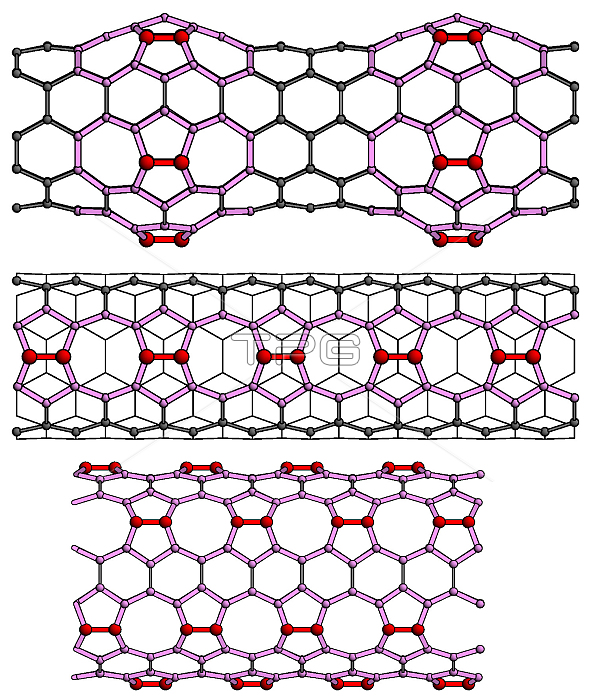
Nanotube designs include (from top) "bumpy," "zipper" and "multiple zipper." A new method to systematically modify the structure of single-walled carbon nanotubes could expand their electronic properties and open the path to nano-electronics. Carbon cylinders a few billionths of a meter in diameter and a few microns long, these nanotubes are one of the strongest structures known and have unique electrical and thermal properties. This promising method to add defects to carbon nanotube walls was developed by researchers at the U.S. Department of Energy's Argonne National Laboratory. They found the easiest and strongest method is by horizontally inserting a carbon dimer into two hexagonal bonds, creating two adjacent pentagons and heptagons (seven-sided structures) in the chain link. After they understood how to add one dimer, the researchers began to add dimers in patterns. The zipper structure particularly appeals to Argonne researchers because the atomic spacings in the openings are just the right size to bond nanotubes to Ultrananocrystalline (tm) diamond and combine the properties of both.
| px | px | dpi | = | cm | x | cm | = | MB |
Details
Creative#:
TOP22288206
Source:
達志影像
Authorization Type:
RM
Release Information:
須由TPG 完整授權
Model Release:
N/A
Property Release:
No
Right to Privacy:
No
Same folder images:

 Loading
Loading